MFA Sunday School (Five: Sestinas; Chopped Edition)
![]() Welcome to MFA Sunday School, a once-a-week, free, online writing workshop. MFA Sunday School posts are uploaded on Sunday mornings, though you can read them or participate any time — the comment section is always open for people to post a link to their work or ask a question. You can subscribe to blog posts via the RSS feed, or look for them under the category heading “MFA Sunday School.” If this is your first time in “class,” you may want to jump back to the first post in the series in order to understand how things work.
Welcome to MFA Sunday School, a once-a-week, free, online writing workshop. MFA Sunday School posts are uploaded on Sunday mornings, though you can read them or participate any time — the comment section is always open for people to post a link to their work or ask a question. You can subscribe to blog posts via the RSS feed, or look for them under the category heading “MFA Sunday School.” If this is your first time in “class,” you may want to jump back to the first post in the series in order to understand how things work.
Hopefully you’ve now found your groove of 15 minutes a day. Let me repeat something that was in that last lesson: if it’s going well, stick with it. Now is not the time to try to bring it up to an hour. (Unless you’re a full-time writer, and then your problem wasn’t finding time; it was using time and forcing yourself to write… and that is a different lesson that we’ll get to in the future: making yourself write when you don’t want to write or getting over writer’s block.) Stick to 15 minutes a day for a few weeks until not only your groove but other people’s expectations are set. Then take a hard look at your schedule and see if you can afford to move it to a half hour a day. If you can’t, stick to 15 minutes (you can write a book in a year working on it in 15 minute increments). If you can, that’s when you increase your time as long as you can maintain it daily. I promise you, years of bad writing habits have taught me this lesson well.
So today’s lesson: sestinas. Some people put down on the form that they wanted to learn about poetry, and I’ve had a crap week and needed to do something fun. So this lesson is really about playing with words in the form of a collapsing sestina, which is a non-rhyming fixed form poem. I wrote similarly about it last month for NaBloPoMo, except your homework today will be very very different from the work you did over there. So give this a chance even if you’re on the fiction or creative non-fiction side of this MFA department.
Fixed form poetry is meant to free the mind by providing a structure much in the same way a house frees the person who lives inside to focus on things other than the elements outside. Hmmm… interesting concept, right? Believe me, we’re going to employ it a bit in our fiction writing too because it’s true: when we know we’re not being held against our will, being boxed in sometimes makes humans feel safe and comforted. Think: hugs, cozy sleeping bags, sleeper cars on trains.
The sestina has six stanza, all six lines long, with a final three-line envoy. Unlike a lot of other fixed forms, sestinas don’t rhyme or have a set meter. Instead, they utilize six end-words in various ways, pointing out sometimes the subtle meaning shifts in those end-words depending on their context.
One of the easiest poems to look at in order to understand the form is Carole Oles “The Magician Suspends the Children” published first in The Loneliness Factor in 1979 which begins,
With this charm I keep the boy at six (A)
and the girl fast at five (B)
almost safe behind the four (C)
walls of family. We three (D)
are a feathery totem I tattoo (E)
against time: I’ll be one (F)
Ignoring those letters in parentheses for a moment, the six end-words are all numbers in this case: six, five, four, three, two, and one. Yet you can already see Oles playing with the form in the first stanza. Instead of the number two, she incorporates it into the word “tattoo.” Later in the poem, she uses “won” in place of “one,” “too” in place of “two,” and “for” in place of “four.” It’s a poetry form with a lot of leeway.
To see other usages of end words, check out Elizabeth Bishop’s “Sestina” or Ezra Pound’s “Altaforte.”
The second stanza takes those end-words and uses them again to end each line, except it mixes up the order. If you look at those six lines above as each pertaining to those letters in parentheses, the order then collapses upon itself — A, B, C, D, E, F becomes F, A, E, B, D, C (or last, first, second to last, second, third to last, third).
In the third stanza, it collapses again: C, F, D, A, B, E. If you look at the end-words in the third stanza, you’ll see that they are fore, wun, three, six, five, onto.
In other words, the full form of a collapsing sestina (since there are also sestinas that utilize the end-words as end-words but play with the order of the lines):
Stanza One: A, B, C, D, E, F
Stanza Two: F, A, E, B, D, C
Stanza Three: C, F, D, A, B, E
Stanza Four: E, C, B, F, A, D
Stanza Five: D, E, A, C, F, B
Stanza Six: B, D, F, E, C, A
Envoy: uses two end-words per line (with three lines total) with one word appearing in the middle of the line and the other word still being utilized as an end word.
Pretty cool, right?
Homework: Let’s have a little fun with this. You know the Food Network show Chopped where the contestants open their baskets and have to utilize a set of mismatched ingredients and bring them together to form a cohesive dish? (“Contestants, open your baskets. You have smoked oysters, grape jam, watercress, and corn chips… go!”) I’m going to give you the six words to play with so everyone has the same end-words. I’ve chosen words that can be utilized in numerous ways. Once you’ve used one or two of your 15-minute sessions to play with words this way and write your sestina (since, you know the Chopped contestants only have 15 minutes too), either post your poem in the comment section below or post it on your blog and return with a link to your poem. We’ll gather them up and have our own verbal episode of Chopped, except instead of chopping the weakest poem, we’ll just honour the most delicious one.
The end-words in your word basket: fair, to, sun, hope, rest, sing (will also accept for this last one, song).





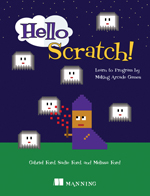
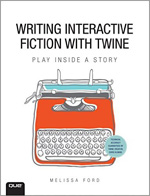
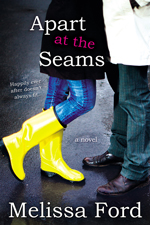
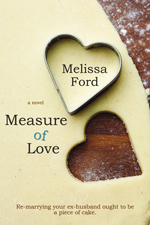
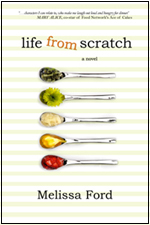
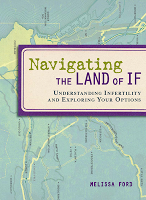


14 comments
Wow! This one is going to be a big stretch for me. Are we each writing just one stanza or all six?
Such a cool lesson. This post reminds me why I keep wanting to take a poetry class someday.
Still working on this assignment, but is it cool if I post a link to a sestina I’ve written before? I just posted it on my blog:
http://soonafamily.wordpress.com/2012/05/14/not-the-may-poem/
If nothing else, it might be a (hopefully good) example for someone else.
Okay, I think I want to try this too. I will take a a few days off from using my 15 mins. on my book proposal to work on this exercise. I really appreciate Daryl’s example (thank you and very impressive) and I echo MHM’s question regarding how many stanzas? I am assuming all six. I will post on my blog and a link here when I am done. Should be interesting! Thanks for the challenge and the lesson! 🙂
Yup, Mel did respond that it is all six stanzas and the envoy. Glad I wasn’t the only one with the question.
This is really hard (and fun too)! 🙂
I haven’t written a poem since jr. high and I had no idea what a sestina was until I read this post. It is certainly not a shining example but I’m here to learn so this is what I was able to come up with. I enjoyed playing with the words and would love to improve it so feel free to leave your suggestions. http://www.mudhutmama.com/assignment-three-sestinas/
Can you make any of the end words in our basket plural?
I Googled it and it appears, that yes, you can make the end words plural. 🙂
I did! I really did it! 🙂
Check it out: http://bereavedandblessed.com/2012/05/my-first-sestina-to-sing/
MHM – I can’t wait to check yours out too, I have to run now, but will be back later to read what you wrote and give you my feedback!
Looking forward to hearing what you all think of mine too! 🙂
And thank you Mel for the knowledge and inspiration to attempt this challenge. It wasn’t easy, but it was a fun and an interesting writing exercise. 🙂
P.S. MHM’s sestina is awesome! I found it so interesting to see the similarities and differences between each of our poems, since we both started with the same words in our basket. It was cool to see the direction MHM went with them and how she varied their use throughout her sestina. Can’t wait to read more!
Done! This one went a lot faster than my first attempt. I hope that’s not a sign of the quality. 🙂 Looking forward to all of your thoughts.
http://soonafamily.wordpress.com/2012/05/18/may-poem-for-realsies-this-time/
Here we go, just posted mine. I really liked this assignment so thank you. It brought out some creativity.
http://marwil.org/2012/05/19/my-first-sestina/
Finally! Just done mine – how hard is it to finish a line with ‘to’?!! I do admit to cheating a bit – mine’s here http://beyondtheparentheses.wordpress.com/mels-writey-stuff/week-5-sestinas/tuesday-a-full-attempt/
I liked doing this but it felt very repetitive, an art to using the words creatively. I imagine much of the fun is coming up with the words to use without knowing the direction of the poemthing first